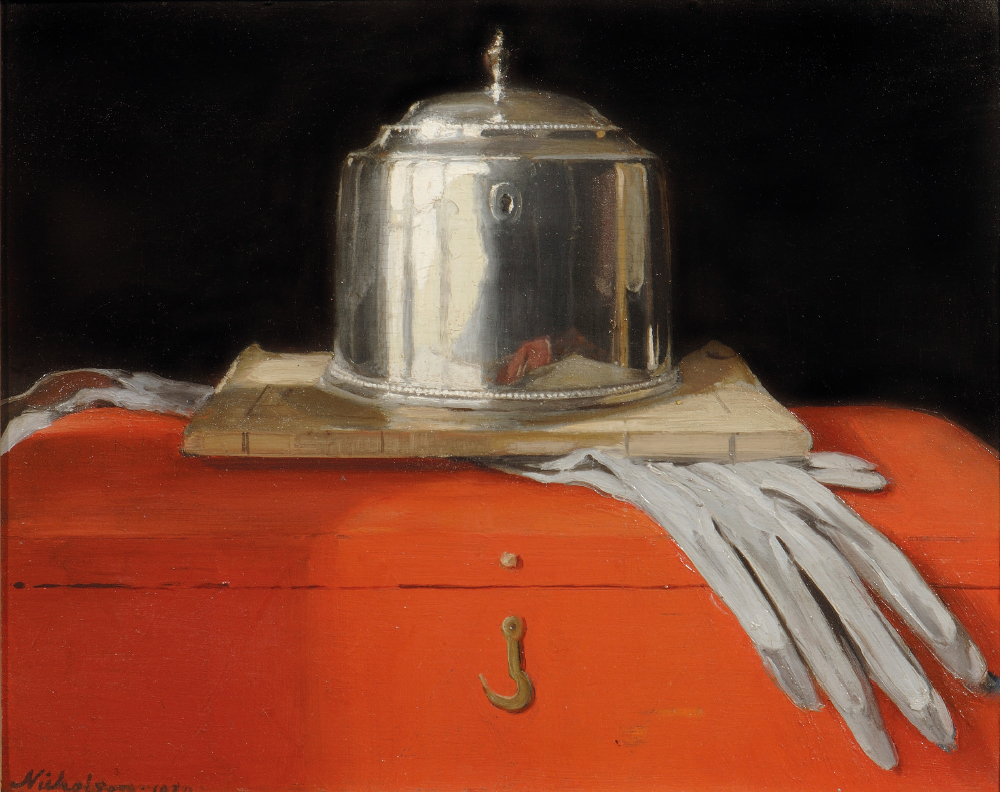‘The tyrannical rule of nature morte is, at last, over,’ announced Paul Nash in the Listener in 1931. ‘Apples have had their day.’ Since Cézanne fulfilled his famous boast that he would astonish Paris with an apple, artists had been trying the same trick in London, with limited success. Astonishment, unfortunately, only works once. Nash had had it up to here with them apples: tired of post-impressionism, tired of still life.
An electric toothbrush occupied the same place in Hamilton’s heart as Mont Sainte-Victoire in Cézanne’s
Continental ghosts haunt the tabletops of Pallant House Gallery’s informative new survey of modern and contemporary British still life. First it was the Dutch, emulated in the show’s introductory room in a Mary Moser flower painting and a ‘Still Life with Joint of Beef on a Pewter Dish’ (c.1750-60), done to a turn by the Chichester-born painter George Smith. Had other Britons followed Smith’s patriotic lead in their choice of subjects we might have developed a native strain of still life less dependent on European influence; as it is, the exhibition proper begins with William Nicholson’s 1920 ‘Silver Casket and Red Leather Box’ (see below) emulating Chardin and a bunch of fauve-light fruits in compotiers by the Scottish colourists. Meanwhile, Mark Gertler’s animated ‘The Dutch Doll’ (1926) forecasts a new wind from across the Channel, bringing surrealism.

Surrealism was a gift to still-life painters, opening up the tired old nature morte repertoire to all manner of exciting new objects like the nautical odds and sods in Edward Wadsworth’s ‘Bright Intervals’ (1928). But the bright interval wouldn’t last; the vanitas returned with the second world war. Keith Vaughan’s ‘Still Life with Skull’ (1952-3) echoes Cézanne’s 1898 composition of the same title, without the apples.








Comments
Join the debate for just £1 a month
Be part of the conversation with other Spectator readers by getting your first three months for £3.
UNLOCK ACCESS Just £1 a monthAlready a subscriber? Log in